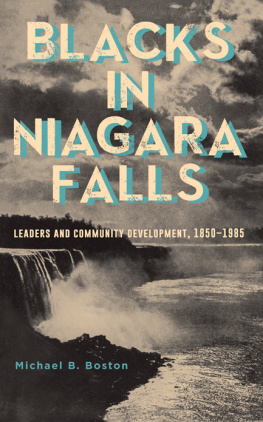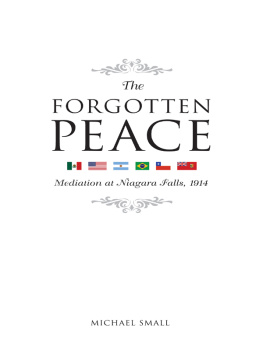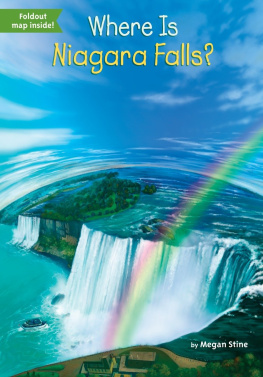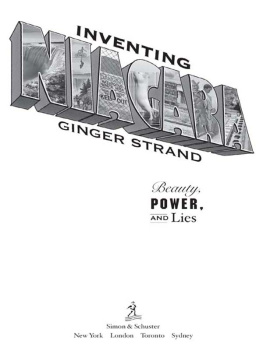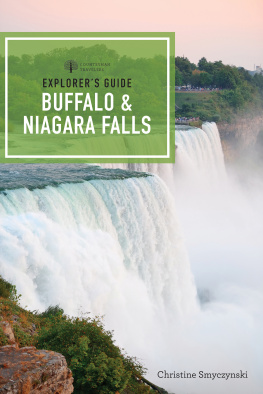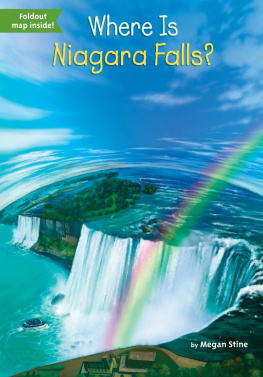BLACKS
IN
NIAGARA
FALLS
BLACKS
IN
NIAGARA
FALLS
LEADERS AND COMMUNITY DEVELOPMENT, 18501985
Michael B. Boston
Published by State University of New York Press, Albany
2021 State University of New York
All rights reserved
Printed in the United States of America
No part of this book may be used or reproduced in any manner whatsoever without written permission. No part of this book may be stored in a retrieval system or transmitted in any form or by any means including electronic, electrostatic, magnetic tape, mechanical, photocopying, recording, or otherwise without the prior permission in writing of the publisher.
For information, contact State University of New York Press, Albany, NY
www.sunypress.edu
Library of Congress Cataloging-in-Publication Data
Name: Boston, Michael B., author.
Title: Blacks in Niagara Falls : leaders and community development, 18501985 / Michael B. Boston.
Description: Albany : State University of New York Press, [2021] | Includes bibliographical references and index.
Identifiers: LCCN 2020044891 | ISBN 9781438484617 (hardcover : alk. paper) | ISBN 9781438484631 (ebook)
Subjects: LCSH: African AmericansNew York (State)Niagara FallsSocial conditions20th century. | African AmericansCivil rightsNew York (State)Niagara FallsHistory20th century. | Niagara Falls (N.Y.)Race relationsHistory20th century. | Niagara Falls (N.Y.)History20th century. | Niagara Community Center (Niagara Falls, New York)History.
Classification: LCC F127.N8 B75 2021 | DDC 305.896/0730747980904dc23
LC record available at https://lccn.loc.gov/2020044891
10 9 8 7 6 5 4 3 2 1
I dedicate this book to all who helped make this project possible,
especially Barbara Smith, Theodore Williamson, Arthur Ray,
Zorie Bell Boling, Eugene Hamilton, Indiana Martin,
Carlyle Miller, Eddie Palmore, Helen Reed-McBride,
Barbara Williams, and William Williamson.
I heard your voices.
Contents
Illustrations
Figures
Tables
Acknowledgments
I thank all the extraordinary people who helped me complete this book. First and foremost, I am grateful to the numerous Niagarans who enthusiastically granted me interviews over the years, thereby allowing me to deeply understand the Black Niagaran community. I thank community leaders Barbara Smith, Theodore Williamson, and Arthur Ray, whom I met in 2002, for their commitment to this project, the encouragement they continuously offered, the time they shared with me, and their tremendous patience. I also thank my colleagues who offered helpful comments when I presented chapters of this book at numerous conferences.
In particular, I sincerely thank the Niagara Falls Public Library librarians who aided me tremendously: Maureen Fennie, Linda Reinumagi, Cecilia Driscoll, and Jennifer Potter. Maureen and Linda, now retired, graciously assisted me for ten years, always answering my endless entreaties for help.
Finally but never last, I thank SUNY Press for helping to turn my manuscript into a book, including senior acquisitions editor Mike Rinella, production editor Jenn Bennett-Genthner, and marketing manager Mike Campochiaro.
Introduction
Journey to My Distinct Research Mythological Approach
A t the end of May 2002, I had just completed a visiting professorship at the University of Memphis. While in Memphis, I found it difficult to conduct research and also be a full-time teacher who could give the students the high-quality education they deserved. The summer ahead was a long-awaited time for research. But what could I research? I did not want to follow the path of many historians and rehash what was already known, giving my interpretation of history without contributing to scholarship and knowledge of past events for current and future generations. I wanted to concentrate on African American history, considering it to be a field in need of more intensive work. Major scholars in the field had recently died, including Benjamin Quarles, John Hope Franklin, John Blassingame, Ira Berlin, John Henrik Clarke, C. Vann Woodward, Louis R. Harlan, and Monroe Fordham, leaving extensive records of their important pioneering works. How could I follow in their footsteps?
In mid-June, I found an article that quoted Monroe Fordham, who was both a fine historian and a great archivist. Fordham noted that of all the articles he reviewed over twenty years for the journal he edited, Afro-Americans in New York Life and History, none had covered the history of Black Niagarans. He considered it odd. This lack of attention to Black Niagaran history intrigued me. From my graduate training, I imagined that some professionally trained historians might consider such a project unworthy, partly because Niagara Falls, a small city, just cant boast of having the same sort of overtly eventful history as major cities. Yet, the history needed to be told. After all, Niagarans must have contributed to Underground Railroad endeavors; it is common knowledge that fugitive slaves traveled through Niagara Falls on their way to Canada. Surely some of them were aided by local Underground Railroad agents. Some probably also stayed in Niagara Falls rather than relocate to Canada. What happened in the ensuing years? What specific circumstances led to the increase in the Black Niagaran population? Were the experiences of Black Niagarans similar to those of African Americans who relocated to other northern urban locales? Consideration of these and other thoughts ensued.
I went to the Niagara Frontier region eager to engage in some meaningful research to uncover unknown histories. I visited the Earl W. Bridges Public Library in Niagara Falls, thinking that the library would have a profusion of sources on Black Niagaran history. What I found was that few sources were available, not only about Black Niagarans but also about other ethnic groups. There were three or four notebooks full of newspaper clippings that highlighted individuals or events associated with African American history. Over the years, the librarians had recorded a number of newspaper articles written on Black Niagarans from the Niagara Falls Gazette (the main local newspaper) and recorded these data in their card catalogue. Also available were the following: a 1950s Niagara University masters thesis, the papers of local resident R. Nathaniel Dett, and a box of papers from the Human Rights Commission from the 1960s and 1970s. Although I had expected much more primary and secondary data, what was available was extremely helpful, and the librarians aided me tremendously.
I began my research by searching the card catalogue. Then I read the articles on microfilm, a process that took years. I noticed that the Niagara Falls Gazette had only superficial accounts of events that occurred in the African American community, especially in the years before the civil rights movement. The how, when, and what questions could not always be answered, and connections and generalizations were usually difficult to make. African Americans were definitely on the margins in their coverage. Criminal activities involving Black Niagarans, in contrast, garnered more attention, which helped to perpetuate existing racial stereotypes. By the end of that first summer, I had accumulated enough data, including four interviews, to write an article: Blacks in Niagara Falls, A Survey, 1865 to 1965. At the time, I had no intention to write a book because the sources seemed too scarce and because researching and writing a book on Black Niagarans would be a long and painful process. I merely wanted to encourage other more experienced researchers to pick up the ball and run with it.


